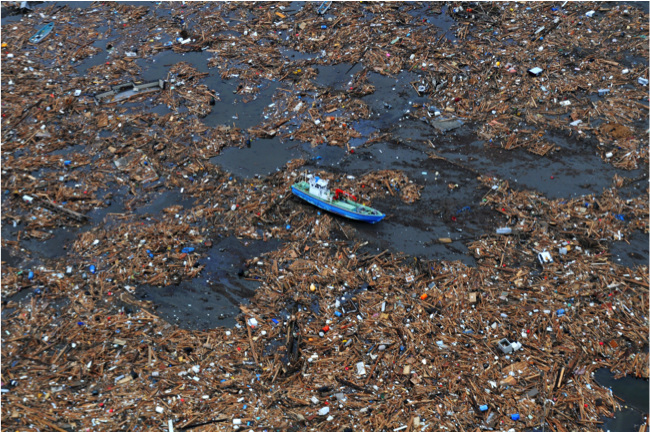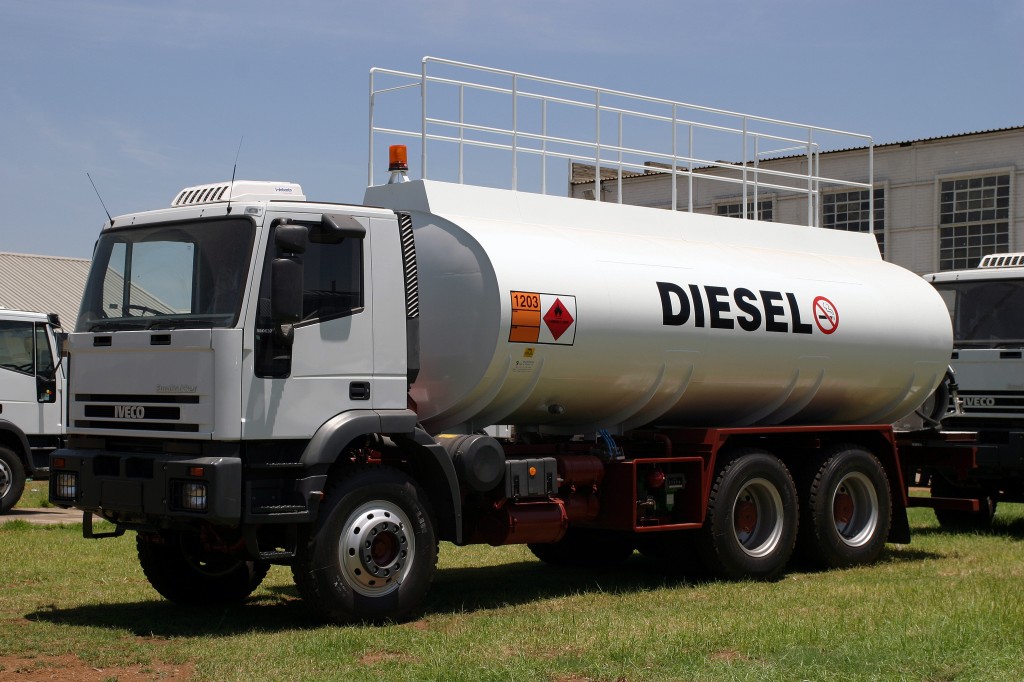Fueling Cars with Plastic Bags
by Kevin Chung

Mid-oceanic garbage islands like these are sprouting all over the Pacific Ocean as oceanic gyres carry away littered plastic bags from both Asia and the Americas.
Can you imagine pulling up to a fuel station and filling your car up with plastic bags? As far-fetched as the idea may sound, the groundwork has been laid down. A recent study at the University of Illinois – Champaign have discovered the link between mid-Pacific garbage patches and the next big alternative fuel source, providing a solution to both the growing oceanic landfill issues (a sad and detrimental irony) and the inevitable depletion of fossil fuels. With many new islands collecting in oceanic gyres (spirals of ocean currents), the new technology sheds a light of hope for the global ecology.
Plastic bags take up a major portion of litter from the United States, with around 100 billion bags going to waste each year. According to the U.S. Environmental Protection Agency, only about 13 percent is recycled; the rest end up in landfills or enter waterways into sizeable oceanic garbage patches that threaten the indigenous ecology.
However, a recent research led by Brajendra Kumar Sharma, a senior research scientist at the Illinois Sustainable Technology Center, discovered that these plastic bags could be recycled and converted into petroleum products that can serve a multitude of purposes in our everyday lives. The most beneficial is the conversion into diesel fuel. “It’s perfect,” said Sharma. “We can just use it as a drop-in fuel in the ultra-low-sulfur diesel without the need for any changes.”
Pyrolysis
The conversion occurs through a process called pyrolysis, a method of heating the plastic bags in an oxygen-free chamber. Pyrolysis produces significantly more energy than required (meaning the net outcome is very high) to convert these bags into usable fuel source like automotive diesels that can be blended into the existing low-sulfur diesel and biodiesels. The process can transform shopping bags into other products, such as “natural gas, naphtha (a solvent), gasoline, waxes, and lubricating oils such as engine oil and hydraulic oil.” (Sharma).
Application of Plastic Bag Petroleum
Other benefits include the efficiency in transforming these waste bags into profitable resources. For example, the distillation of standard crude petroleum oil only yields an efficiency of around 50 to 55 percent. Since plastic bags have already been refined, the distillation process can yield up to 80 percent fuel recovery. This allows for diesel fuels to not only be more affordable for consumers, but also more economically profitable. The infused diesel is expected to have the same efficiency as standard diesel fuel when combusted in automobiles.
Combined with the rising concerns of the mass amounts of plastic bag debris piling up in the oceans, this newfound application of shopping bags offer a new solution to not only clean up the open waterways but also solve the depleting nonrenewable energy crisis. These plastic bags can also trickle down into the food chain. “Over a period of time, this material starts breaking into tiny pieces, and is ingested along with plankton by aquatic animals,” said Sharma. “Turtles, for example, think that the plastic grocery bags are jellyfish and they try to eat them,” he said. Other creatures can become entangled in the bags.
Previous studies have utilized pyrolysis to convert plastic bags into petroleum, but Sharma’s team is the first to go beyond and distill the bags into a variety of petroleum products. As the impending uncertainty of the global fossil fuel supply and the issue of mid-oceanic garbage patches growing, his research will go a long way to provide a solution to both issues at hand.
Source:
Brajendra K. Sharma, Bryan R. Moser, Karl E. Vermillion, Kenneth M. Doll, Nandakishore Rajagopalan, “Production, characterization and fuel properties of alternative diesel fuel from pyrolysis of waste plastic grocery bags.” Fuel Processing Technology. Vol. 122 (June 2014): 79-90.
http://dx.doi.org/10.1016/j.fuproc.2014.01.019.
Further Reading:
Japanese Inventor makes Fuel from Bags
Algae to Crude Oil: Million-Year Process Takes Minutes in Lab

